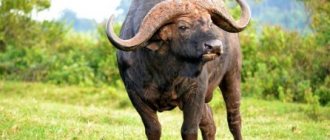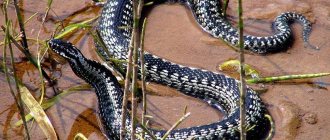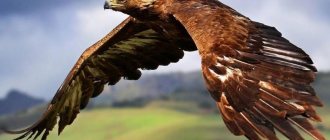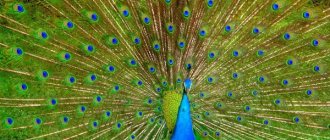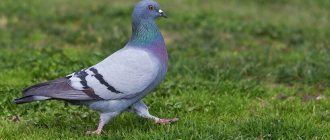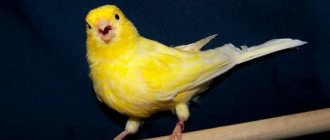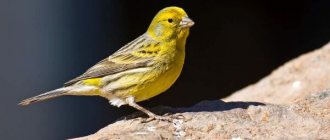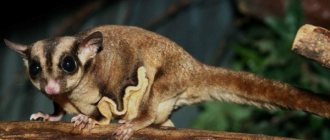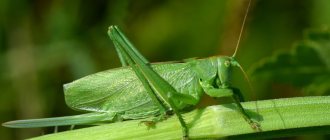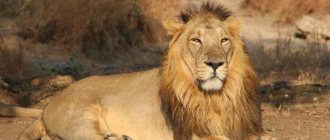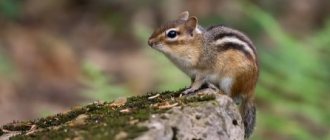One of the very first animals to be domesticated by man was the buffalo. Ancient rock paintings contain fragments of a water buffalo plowing land. They differ from domestic and wild cattle in the structure of their head, shortened body, and lowered rump. The hairline is somewhat sparse. The powerful horns of the formidable creature are directed in different directions. A recognized assistant in draft work in the household, it also produces meat, milk, and hides. In the wild, the artiodactyl lives in several regions of India and Indonesia.
Water buffalo are used as draft power and for the production of meat and dairy products
Asian buffalo: what it looks like, where it lives, what it eats
According to ancient frescoes and rock paintings, among the very first animals domesticated by people were buffaloes, distinguished by their enormous strength and impressive size.
Since ancient times, they were used for cultivating the land as draft power, and their meat and milk were also eaten. Today, the Asian (Indian) water buffalo can be called a prominent representative of this species. If you don’t know anything about this giant yet, then this article is intended to introduce you to it.
Appearance
The Asian water buffalo is a cloven-hoofed member of the bovid subfamily of the bovid family, and is rightly considered one of the largest ruminant mammals on the planet. This powerful animal in its natural environment can live longer than 25 years and has the following external characteristics:
- weight - from 900 kg to 1 t 600 kg;
- height at the withers - about 2 m;
- body length - 3-4 m (the female has slightly less);
- barrel-shaped body;
- long, sickle-shaped horns spread to the sides and curved towards the back, reaching a span of 2 m;
- Buffaloes have smaller, straight horns;
- legs - high, up to 90 cm;
- tail - powerful and strong, 50–60 cm long;
- black, coarse wool.
Notes
- ↑Bubalus bubalis (English) information on the Fossilworks website.
- ↑Complete illustrated encyclopedia. "Mammals" Book. 2 = The New Encyclopedia of Mammals / ed. D. MacDonald. - M.: Omega, 2007. - P. 470. - 3000 copies. — ISBN 978-5-465-01346-8.
- ↑Sokolov V. E. Systematics of mammals. Volume 3. Cetaceans, carnivores, pinnipeds, aardvarks, proboscideans, hyraxes, sirens, artiodactyls, callouseds, odd-toed ungulates. - M.: Higher School, 1979. - P. 479. - 528 p.
- ↑ 12Sokolov V. E. Five-language dictionary of animal names. Mammals. Latin, Russian, English, German, French. / under the general editorship of academician. V. E. Sokolova. - M.: Rus. lang., 1984. - P. 129. - 10,000 copies.
- ↑Bannikov A.G., Flint V.E. Order Artiodactyla (Artiodactyla) // Animal life. Volume 7. Mammals / ed. V. E. Sokolova. — 2nd ed. - M.: Education, 1989. - P. 510-512. — 558 p. — ISBN 5-09-001434-5
- ↑ 12Buffalos // Botosani - Variolite. - M.: Soviet Encyclopedia, 1951. - P. 239-240. - (Great Soviet Encyclopedia: / chief editor S. I. Vavilov; 1949-1958, vol. 6).
- ↑ 12Hedges S., Sagar Baral H., Timmins RJ, Duckworth JW 2008. Bubalus arnee. The IUCN Red List of Threatened Species 2008.
- ↑ 12345Castello JR (2016) Bovids of the World: Antelopes, Gazelles, Cattle, Goats, Sheep, and Relatives. — Princeton University Press. - Pp. 596-601. — 664 p. — ISBN 978-0-691-16717-6
- ↑Wilson DE {amp}amp; Reeder DM (eds). Mammal Species of the World. — 3rd ed. - Johns Hopkins University Press, 2005. - Vol. 1. - P. 743. - ISBN 0-8018-8221-4.OCLC 62265494.
- ↑Bubalus bubalis (English) information on the Fossilworks website.
- ↑Complete illustrated encyclopedia. "Mammals" Book. 2 = The New Encyclopedia of Mammals / ed. D. MacDonald. - M.: Omega, 2007. - P. 470. - 3000 copies. — ISBN 978-5-465-01346-8.
- ↑Sokolov V. E. Systematics of mammals. Volume 3. Cetaceans, carnivores, pinnipeds, aardvarks, proboscideans, hyraxes, sirens, artiodactyls, callouseds, odd-toed ungulates. - M.: Higher School, 1979. - P. 479. - 528 p.
- ↑ 12Sokolov V. E. Five-language dictionary of animal names. Mammals. Latin, Russian, English, German, French. / under the general editorship of academician. V. E. Sokolova. - M.: Rus. lang., 1984. - P. 129. - 10,000 copies.
- ↑Bannikov A.G., Flint V.E. Order Artiodactyla (Artiodactyla) // Animal life. Volume 7. Mammals / ed. V. E. Sokolova. — 2nd ed. - M.: Education, 1989. - P. 510-512. — 558 p. — ISBN 5-09-001434-5
- ↑ 12Buffalos // Botosani - Variolite. - M.: Soviet Encyclopedia, 1951. - P. 239-240. - (Great Soviet Encyclopedia: / chief editor S. I. Vavilov; 1949-1958, vol. 6).
- ↑ 12Hedges S., Sagar Baral H., Timmins RJ, Duckworth JW 2008. Bubalus arnee. The IUCN Red List of Threatened Species 2008.
- ↑ 12345Castello JR (2016) Bovids of the World: Antelopes, Gazelles, Cattle, Goats, Sheep, and Relatives. — Princeton University Press. - Pp. 596-601. — 664 p. — ISBN 978-0-691-16717-6
- ↑Wilson DE {amp}amp; Reeder DM (eds). Mammal Species of the World. — 3rd ed. - Johns Hopkins University Press, 2005. - Vol. 1. - P. 743. - ISBN 0-8018-8221-4.OCLC 62265494.
Who is larger: Indian water buffalo or African
Another large and strong bull is the African bull, which is not much inferior to its Asian relative:
- slightly shorter height - 180 cm at the withers;
- weight - up to 1300 kg;
- horn span - 190 cm.
Nevertheless, in terms of endurance and ferocious character, they are very similar and can stand up for themselves, not shying away from large predators, such as lions and tigers, or from humans.
Distribution area and habitat
The names “Indian” and “Asian” indicate the territorial affiliation of the buffalo. These large mammals are found in the following areas:
- in Ceylon,
- in some regions of India,
- in Thailand,
- Bhutan,
- Indonesia,
- Nepal,
- Cambodia,
- Laos.
The water bull is also found on the European and Australian continents. Domesticated individuals are more common and reproduce well in captivity due to isolation from wild conditions.
Lifestyle, character and habits
Despite their power and strength, buffaloes are cautious and prudent animals and avoid unnecessary contact with people. If human settlements are nearby, bulls change their lifestyle to nocturnal. The name “water buffaloes” itself speaks volumes about their habitat. Here are some of their habits:
- The bull spends most of its life in bodies of water that are its native element: rivers, swamps, lakes, ponds. The animal likes to be almost completely submerged in water, leaving only its head with majestic horns on the surface. This is a good way to escape the heat and parasites.
- On land, it prefers to be in deciduous and evergreen forests with sparse trees, without dense thickets, where there are bodies of water nearby.
- Animals rarely appear in open areas, only in search of food.
- In mountainous areas, buffalos can climb to heights of over 2500 meters.
- Animals live in herds of 10–12 animals: 1–2 males, 4–6 females with cubs and older young animals. It is also possible to unite family herds into larger groups.
- The head of the herd is usually the oldest and most experienced buffalo: during movement, she can be in front as a leader or bring up the rear of the retreat.
- The female leader warns the herd of the threat with a piercing snort, after which her charges must stop and freeze.
- After the danger is identified, buffaloes will take up a battle formation, but will never attack first: they are peaceful towards other animals and do not like to enter into conflicts, but prefer to quietly retire into the thicket of the forest.
- If the conflict could not be avoided, then the bull can attack the uninvited guest in a special way: with a blow from one horn, it is able to throw the enemy a considerable distance.
- Elderly buffaloes usually live as hermits due to the fact that closer to old age their character deteriorates significantly and they become more aggressive than young individuals. Sometimes there were cases where elderly lone buffaloes attacked people.
Interesting Facts
Buffaloes are a symbol of the wild pristineness of the savannah and power. As powerful idols, they roam across Africa, delighting and earning respect from locals and tourists alike. If a herd of buffaloes is attacked by a predator, then the animals will in no case leave their fellow tribesman in trouble; together they will fight to the last. For those who are planning to breed artiodactyls at home, some interesting facts about these majestic animals may seem fascinating.
- The buffalo attacks its enemy with its horns, using them as a weapon that can easily rip open the belly of even such a dangerous predator as a lion. After the enemy falls to the ground, the buffalo will trample on him for several minutes until there is practically nothing left of the predator;
- Buffaloes are also attacked by small parasites, such as buffalo cicadas, which feed on the blood of the animal and cause harm to it. Ticks and gadflies bite through the thick skin of the buffalo, and only the horned birds, which often live on the back of the ungulate, pecking out all the parasites, can help them out;
- Many people wonder what a female buffalo is called and how long she bears a baby. A buffalo's pregnancy lasts for 12 months, after which she gives birth to a baby buffalo with fluffy brown fur.
Note! In protecting their cubs, females even put their own lives on the line. If a predator attacks newborn calves, it will immediately be protected by the entire herd, led by the leader - an old huge male
What do buffaloes eat in the wild?
In addition to the fact that ponds help buffaloes endure high temperatures, they are also a source of food for them: up to 70% of buffaloes’ food is in the water, the rest is on the shore. The diet of a water buffalo includes:
- forbs of meadows and fields;
- plant leaves;
- young shoots;
- bamboo shoots;
- greenery of bushes;
- seaweed;
- marsh herbs.
Reproduction
Below is information related to the breeding principles of the Asian buffalo:
- The Indian bull in its natural habitat does not have a specific season for rutting and calving. But most often this happens from late autumn to mid-spring (November–April). This is due to the fact that animals live in warm climates and are capable of conceiving at different times of the year.
- Animals reach sexual maturity at two to three years.
- During the rutting season, young single males form a temporary herd. The male makes a loud calling sound, similar to the roar of a deer, which can be heard within a radius of one to two kilometers.
- Males arrange fights, during which they demonstrate their strength, but do not cause serious injuries to each other.
- A female ready for mating emits a special odor that attracts males and gives them a signal to mate. After this, she is fertilized by the male who has achieved his favor.
- Pregnancy in a water buffalo lasts 9–10 months.
- With the onset of labor, the buffalo retires into the thickets and returns to the herd alone with the baby.
- Usually, a female gives birth to one fluffy calf with a red color and weighing from 40 to 50 kg, which the mother carefully licks and raises to its feet.
- The calf stays with its mother for 6–9 months, feeding on her milk all this time. At the end of this period, the baby partially switches to independent feeding, although the mother continues to feed him until he is one year old.
- During the 3-year period, male calves are in the maternal herd, and after that they create their own family herds. Females remain in the maternal herd all their lives.
- Each female calves once every two years.
Read also: Reproduction of bees by artificial means
Population and conservation status
Today, the majority of water buffalos live in areas protected by humans. In India, the habitats of wild bulls are completely confined to national parks (for example, Kaziranga National Park in Assam), where hunting for them is strictly regulated. The same situation prevailed on the island of Ceylon. In the countries of Bhutan and Nepal, the number and range of the Indian bull is constantly declining. The reason for this is the decrease in natural habitat areas due to human activities. Another serious threat to the existence of water buffaloes is their constant crossing with domestic counterparts, which leads to a loss of purity of the gene pool.
In conclusion, we would like to emphasize that today the population of these majestic animals is preserved thanks to their successful reproduction and human conservation efforts.
Classification
Buffaloes at the Berlin Zoo
There are up to 6 forms of the Asian buffalo, to which different researchers assign different systematic ranks. Currently, 4 subspecies of wild Asian buffalo Bubalus arnee
, and the domesticated form is considered a separate species,
Bubalus bubalis
, with one genetically distinct variety from the nominative variety:
- Bubalus arnee arnee
(=
B. bubalis arnee
) - eastern India and Nepal; - Bubalus arnee fulvus
(=
B. bubalis fulvus
) - the largest subspecies, Assam and surrounding areas; - Bubalus arnee theerapati
(=
B. bubalis theerapati
) - western and southern parts of the Indochina Peninsula; - Bubalus arnee migona
(=
B. bubalis migona
) -
Ceylon water buffalo
, Sri Lanka; - Bubalus bubalis bubalis
- a domesticated form of the Asian buffalo, the so-called “river type”, has 50 chromosomes; - Bubalus bubalis
var.
kerabau
is a special variety, the "swamp type" of the domestic Asian buffalo, with 48 chromosomes.
Domesticated Asian buffalo
Asian, Indian buffalo.Characteristics
It is one of the largest representatives of its genus. Adult bulls can grow to a length of approximately 3 meters, with a height at the withers of approximately 2 meters. On average, a bull weighs 900-950 kg, but there have been cases where the carcass weight reached 11,200 kg. The male of this kind has large black horns, approximately 2 meters long. It happens that females also have horns, but usually they are small compared to the male. The body of the animal is covered with coarse black fur.
The Indian buffalo is most common as a domestic animal, less and less in the wild. Every self-respecting hunter dreams of hanging the horns of a real Indian buffalo in his house. Hunting a large bull bull is a real reward for the hunter. Since there are not many wild individuals left, hunting them is prohibited, but there are countries, such as Australia, where hunting is limited but allowed. In such a country, this animal is a predatory, aggressive, powerful beast; if you compare this huge predatory animal in a fight with a tiger, you can safely assure that the bull will win.
The gestation period of a cow lasts on average from 300 to 330 days, after which labor begins and the female is able to give birth to only one calf. A calf has a feeding period of about 6-9 months.
Subspecies
The African buffalo has long been one of the seven most dangerous animals in Africa. In terms of the number of human victims, this giant annually surpasses the big cats of the savannah, such as lions and leopards, yielding leadership only to such celebrities as the Nile crocodile and hippopotamus. Nevertheless, even such a dangerous and powerful beast could be tamed by man. There are quite a few farms on the Dark Continent that successfully breed domestic buffaloes.
A special feature of this species is its unusual hooves. The front hooves are larger and have a larger area than the rear hooves. This provides the animal with reliable support for the front part of the body, which is heavier than the back. A buffalo rushing at high speed, weighing a ton, is a giant battering ram, after meeting which it is impossible to stay alive. Even lions never stand in the way of an angry bull.
There are five subspecies of buffalo in Africa:
- Kaffir in South and East Africa.
- dwarf in Central and Western Africa.
- Sudanese in West Africa.
- Nile in Central Africa.
- mountainous in East Africa.
The name itself suggests that this species lives on the territory of the African continent, and it is impossible to name any specific territory. Bulls feel great both in the forest or in the mountains, and in the vast expanses of the savannah, the only mandatory requirement is the proximity of a reservoir.
Large herds of buffalo can only be found far from human settlements. Cautious animals avoid encounters with humans, as well as any other threats. They are helped in this by a well-developed hearing and an equally good sense of smell. But animals cannot boast of acute vision, and therefore prefer to see danger in everything.
Despite the formidable temperament of bulls, which are extremely reluctant to make contact with humans, people still managed to tame them. African tribes successfully use the physical strength of bulls. Buffaloes plow the land for sowing, cows provide fatty milk, which is used both fresh and for making various cheeses. Buffalo meat is eaten. Skins, bones and antlers are used both in household matters and for decorating houses.
The genus of Asian bull has up to 6 subspecies, among which there are wild and domesticated:
- wild arnee, found in eastern India and Nepal,
- wild fulvus, which belongs to the larger ones, has become widespread in the Indian state of Assam and its adjacent territories,
- wild theerapati, living in the west and south of the Indochinese Peninsula,
- wild migona, or Asian water buffalo, spread to the island of Sri Lanka,
- domesticated water bubalis, called river bubalis,
- domesticated water kerabau, called swamp.
African buffalos are found throughout much of sub-Saharan Africa. There is one main species of African black buffalo, divided into subspecies. One of them is the dwarf forest buffalo, which is the smallest subspecies. The height at the withers is no more than 130 centimeters with an average weight of 275 kilograms. The color of the animal is from red to dark brown with dark spots on the head and shoulders.
The forest buffalo has white tufts of elongated hair growing along the line of its ears, which is another distinctive feature of this species. Their habitat is the Western and Central parts of the African savanna. There are also several intermediate types found in the forests of Kenya and Tanzania.
African buffalos vary greatly from each other not only in size, but also in the color and shape of their horns. Adults are typically dark gray or black in color, while juveniles are tan in color. As buffaloes age, they begin to lose their hair. The adult male is darker than the female and may have gray patches around the eyes. The chin and lower part of the head are slightly paler.
Both males and females have heavy, pointed horns, which in an adult buffalo are its main distinguishing feature. They merge, forming a continuous bony shield across the upper part of the head, then, bending, go with the tip upward. In large individuals, the distance between the ends of the horns reaches more than one meter.
Antlers are fully formed at the age of 5-6 years - this is a powerful and formidable weapon against predators and in battles for dominance. Another distinguishing feature of this species is its large, floppy ears with a fringe of hair around the edges. The weight of adult males reaches up to 1200 kilograms. The height at the withers is 1.5-1.8 meters, and the length is 3-3.5 meters.
Buffalo habitat
The most common habitat of the animal is southern Asia, in countries such as:
- India
- Laos
- Butane
- Nepal
- Thailand
- Cambodia
- Ceylon
The exploitation of these huge bulls is mainly for domestic purposes. Since ancient times, we have known that people widely used animals in their households. At this stage of time, these animals were brought to different countries to serve humanity:
- Japan
- Central America
- South America
- Sudan
- Africa
- Madagascar Island
- Southern Europe
- Transcaucasia
- Ukraine (Transcarpathian and Lviv regions)
What makes them less wild is that they live on protected lands, where they get used to humans. For such an animal, the conditions of its stay are very important. So at this stage of time, their numbers are declining, and hunting has nothing to do with it, it all happens due to the inadequacy of the environment for their existence.
Characteristic living conditions of the Asian buffalo
The main habitats of the animal are endless grassy plains, nearby reservoirs, and slow-flowing rivers. The Asian buffalo prefers to eat plants that grow in bodies of water. To escape the heat, the Indian buffalo likes to lie all day in the mud, immersing its entire body except its head. Due to the fact that the dirt has covered his entire body, he is not hot and additionally saves him from the unwanted midges that pester him. Since they lie all day in swamps and ponds, they graze at night or early in the morning, when the sun does not scorch their skins.
Read also: Giant talker - description of where it grows, the toxicity of the mushroom
The Asiatic buffalo is not a solitary animal; they usually travel in a herd, which includes the oldest bull, several young ones, and several cows with calves. The old bull takes responsibility for the herd. He stays behind the entire herd, and in case of any danger he makes sure that no one lags behind. Young calves generally always go ahead of the herd. There are also buffaloes that walk alone, they are very wild and dangerous and can attack a person for no reason.
Buffaloes also have enemies:
- Red Wolf
- Leopard
- Tiger
- Crocodile
- Komodo dragon
Predators mainly attack young calves and cows, since it is much more difficult to deal with an adult male. But even an adult buffalo cannot escape from Komodo dragons. They pounce on prey and eat them alive.
Buffaloes also have friends, such as egrets and turtles. The bird sits on top of the animal and uses its beak to remove parasites and ticks, thereby easing its fate. Turtles do the same thing.
Asian Buffalo in the household
We can distinguish a domestic buffalo from a wild one by its physique, short horns, and gentle character. A wild male has a more toned body than a domestic one. The usefulness of these animals lies in the fact that they have good pulling power. They are often used for irrigating fields or some other processing. So you can remember from fairy tales or cartoons how the Cossacks transported salt in bags with the help of such buffalo bulls. They walked slowly but with endurance and could cover long distances. Therefore, these animals are valued in the tropics.
Lifestyle
The nickname water bull was given to him for a reason, since he loves water very much and willingly plunges into it until his head, crowned with horns, reaches the water surface.
The African bull feeds mainly on succulent cereals, plants and herbs; the meal time occurs in the morning and lasts until noon. After lunch, African buffalos splash in the water. Moreover, these are precisely those animals that not only love water, spending hours in it, but they are also excellent swimmers. As soon as the herd comes to water and quenches its thirst, it then moves aside, providing a place for bathing for the oldest of the herd.
It is worth noting that the Asian buffalo likes to be among tall grass or reed thickets; it can be found among swampy areas or near the edge of a reservoir. If necessary, buffalo individuals can take a position near the mountains, rising up to 1850 m above sea level.
Since ancient times, bulls and buffaloes have served as human assistants, since these animals are the most powerful among all other species.
Indian buffaloes are very fond of water, so they are more likely to be found in swampy jungles where there are densely overgrown bush valleys. The buffalo's diet consists of aquatic and coastal plants; meadow herbs are less common in its diet.
Animals arrange pasture at dawn or at night; as soon as the heat comes, the Asian bull prefers to hide in the muck.
Today, the bull is inexorably decreasing in numbers, despite massive conservation measures. According to recent estimates, a larger number of wild buffaloes are found in wildlife sanctuaries in India. The reasons for the sharp decline are poachers. But they are not the only ones destroying the pure species. A wild buffalo very easily interbreeds with its wild relatives, and all its pure blood gradually dies out.
Buffalo milk
These animals are useful not only for working on agricultural land, but also in the food industry. Buffalo is classified as a dairy cattle. Although milk productivity is several times lower than that of cows. Buffalo milk is considered exotic. It has a high percentage of fat content, very high in calories, approximately 110 kcal. and it is also nutritious, having high nutritional value compared to cow's milk. It tastes good, looks white and has a characteristic smell.
Buffalo milk is chemically similar to human breast milk. Buffalo milk is widely popular in South Asian countries. Since the cow is a sacred animal in India, the number of buffaloes exceeds that of cows. The largest farm of these animals is also located there.
As we have already written, not only high-quality cheese is made from this milk, but it is also used in its whole form, added to tea or coffee, and even made into butter, the shelf life of which exceeds all shelf life of butter from cow's milk.
Also popular these days are entertainments, which include fighting domestic buffaloes. Long before the competition, the buffaloes are fattened and prepared for battle. Each owner takes his bull into the arena and leaves him there. The bulls begin to butt heads until one of them runs away from the field or falls on his hooves as a sign of defeat. Usually such a spectacle is staged for tourists.
Farmers' advice
Farmers who dare to breed these exotic artiodactyls willingly share their experience of breeding at home. According to some livestock breeders, heat-loving animals do not always successfully adapt to the cold conditions of Russian winters. Other farmers say buffalo cope well with unfavorable conditions.
At first, buffaloes will not bring profit, since they are herd animals with an established organization and the absence of some members of the herd may negatively affect the rest. Therefore, farmers recommend breeding at least one hundred heads. In this case, we can talk about profit.
Important! Domesticated buffalo meat is considered exotic and costs about twice as much as veal. It is often ordered by owners of exotic restaurants. Veterinarians recommend buffalo meat as a dietary product for older people, as it does not contain much fat and carbohydrates.
Thus, domesticated buffaloes have a number of advantages and are quite interesting for breeding. However, farmers should take into account a number of features, such as mandatory access to water and unpredictable temperament.
0 0 votes
Article rating
Life of an Asian buffalo
The Asian buffalo is related to wild bulls, such as bison, yaks, zebu, etc. Beautiful and powerful, these animals have long been fighting with humans for the right to exist on Earth.
Asian buffalos are also called Indian buffalos. They are artiodactyl mammals belonging to the bovid family. They are considered one of the largest among all bulls on the planet, although they are represented by specimens of different sizes:
- Asian buffalo;
- Tamaraw;
- anoa and mountain anoa.
Individuals that are tamed by people are distinguished as a separate species: these are river and swamp buffalos. Domestication took place as early as the 3rd millennium BC. The Indian buffalo is an excellent traction and transport source of meat and milk.
Appearance
The Asian buffalo has not earned the title of one of the largest bulls in the world in vain. With a body length of 3 m, it has a height of 1.80 - 2 m and a weight of 800 to 1200 kg. On the head of the animal there are magnificent flattened horns in the shape of a crescent - the pride of the animal. The distance between the ends of its horns reaches 1.90 m - 2 m, they grow to the sides and are directed backwards.
The horns of their females are not so large, straight, sometimes they are not there at all.
The limbs of wild individuals are high and strong, their tail is about 90 cm in length, their body is covered with coarse, thin, black hair with a brown tint.
Although the domesticated version of this buffalo does not look as intimidating, it is much smaller than its wild relative, and its horns are filed for the safety of its owners.
Read also: Chamomile infusion: benefits and harms, the best recipes, contraindications and uses
Also small representatives of the species are tamaraw and anoa. The former have a height of up to 106 cm and a weight of up to 300 kg, while the latter have a height of 80 cm and 300 kg, respectively.
The best
Today, Field Marshal, living in Great Britain, is the largest bull in the world. Of course, it doesn’t weigh 3.5 tons, but it has already “eaten up” its honest 1,700 kg. The animal continues to grow, and who knows, maybe someday it will reach the incredible mark of three or more tons. Every year he gains 100-140 kg in weight.
He belongs to the French Charolais breed, which is over 200 years old. The bull's height is 195 cm. According to the owner, his pet is very calm and peaceful; he did not cut off his horns and kept the bull in decent appearance. Almost all the time the animal is on free grazing, eats little, remains in excellent physical shape and is the pride of all England and the Charolais bull breed.
Temperament and habits
The appearance justifies the character: the Indian buffalo is ferocious. It fights well, boldly speaking out against predators, and can calmly withstand even a tiger in a fight. Buffaloes in a herd are especially dangerous.
Very old buffaloes that have left the herd are characterized by aggression. They tend to lead away domesticated females, and in case of persecution, they begin to attack, incl. and man.
Livestock is more peaceful and docile.
To live, Indian buffalo gather in a herd. It is usually not numerous:
- adult bull;
- a couple of young buffaloes;
- cows with calves.
The smallest ones are placed in the middle, the older ones are in front, and the young bulls are behind. There is no strict obedience in the herd. His oldest member may even be wandering nearby: he brings back those who have fallen behind.
The behavior of these animals in case of danger is interesting: all together the buffaloes hide in the thickets or make a semicircle in order to then track down the animal that attacked the trail they left.
Oddly enough, buffaloes are friends with rhinoceroses, but cannot stand the tiger.
Buffalo lifestyle and problems
Where does he live?
The Asian buffalo lives in Nepal, Thailand, India, Laos, Cambodia, on the island. Ceylon and Bhutan. But there were times when this animal lived in other parts of our Earth: North Africa, Central China, Mesopotamia.
Domestic buffaloes, of course, are more widespread around the world; their habitats are Australia, Japan, America (South and Central), East Africa, Transcaucasia, etc.
Another name of the “Asian” - water buffalo - fully characterizes his preferences regarding locations. There must be wide bodies of water nearby (rivers and swamps, among others), which horned birds need not only for drinking, but also for daily swimming. They also require plains densely covered with grass to survive.
Schedule
So, the water buffalo for the most part lives near water (where its second name comes from) with a moderate current. This is a necessity for him, he is an excellent swimmer, he can dive or go under water, leaving only his head with gorgeous horns on the surface.
Thus, individuals can easily tolerate high temperatures characteristic of their habitat areas.
They also love to roll around in the mud, which sticks to their entire body and dries right on them. But they do this not because they are dirty, but because of the heat and insects. Flies, gadflies and other bloodsuckers have long adapted to nest on their bodies, ears, nostrils, genitals, etc., for laying eggs.
Water turtles and birds also help them get rid of pests: waterbirds, herons, etc.
These giants eat grass, incl. various underwater and coastal vegetation. At night they graze, and during the day, contentedly, they plunge into the water.
Reproduction
The rut of Indian buffaloes is not associated with the time of year. After mating, a buffalo carries a baby for about 340 days; she does not give birth to more than one baby.
The calf is born fluffy, yellow with a brown undertone. He is breastfed until he is 9 months old.
Hot issues
Due to the fact that the wild Asian buffalo inhabits areas that are of interest to people, the latter simply survive it. The development of steppes and forests by mankind leads to the fact that the water buffalo, tamaraw, etc. simply disappear. Today, the livestock is under protection enshrined at the legislative level, hunting for them is prohibited, special habitat zones have been organized (Pabha, Kaziranga, etc.).
But not only the human factor influenced the decrease in the number of gobies. The fact is that wild individuals tend to mate with domesticated ones. The offspring after such a union can no longer be called true wild “Asians”.
Features of Arnie's behavior
There is an interesting characteristic feature of behavior. An Asian buffalo, almost completely submerged for a long time, lies in the water. Underdeveloped sweat glands contribute to negative heat tolerance, which is why bovids survive in this way. In the aquatic environment, the Indian buffalo is calm, enemies do not pose a threat. A powerful torso seems light, and much less energy is expended. From the water you can only see the head and large horns. Horns allow buffalos to stay above the surface of the water and get out of swampy areas. Arnies dive and swim well, they can even handle huge Asian rivers. In the wild, they live mainly in swampy jungles, valleys, swamps and various bodies of water. Therefore, the Indian buffalo is completely associated with water.
Buffalo loves to swim in water
Main characteristics of the Asian buffalo
Belongs to the class of mammals. Domesticated individuals live up to 26 years. It reaches about four meters in length, almost 2 meters in height, and weighs more than a ton. Among wild bulls like bison, yak, African buffalo, water buffalo is the largest. Long, powerful legs. A strong tail 60-90 cm long. The head of a wild buffalo is slightly flat and smaller than that of a domestic one. The horns of the artiodactyl are large, curved back, grow up to 1.5 m, which distinguish them from other types of bulls. The individual's horns also serve as the main weapon for fighting enemies. Gradually, as they grow older, they curl up. The females themselves are smaller than the males. The horns of females are straight and smaller than those of males. The ears are large with thick hair.
Buffaloes have black fur and large horns
Conservation of Asian buffalo
According to the conservation status of the species, wild arnis are under threat of extinction. The population decline is due to the mixing of wild artiodactyls with domestic animals. In their natural habitat, wild bulls live in a number of safe Indian areas, Thailand, Nepal and Bhutan. In the case of domestic animals, their existence is steadily expanding through positive reproduction. Domestic animals are distinguished by their high performance and endurance. They are recognized as favorites among pack animals in the agricultural industry due to their low maintenance costs and unpretentious nature.
The post General Characteristics of the Water Buffalo Breed appeared first on SeloMoe.
